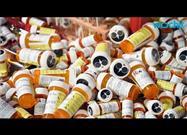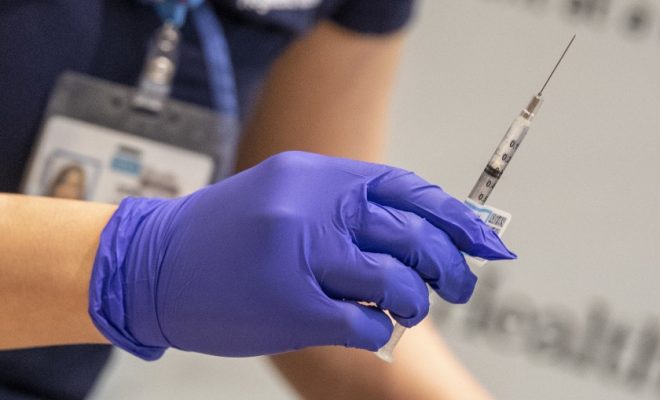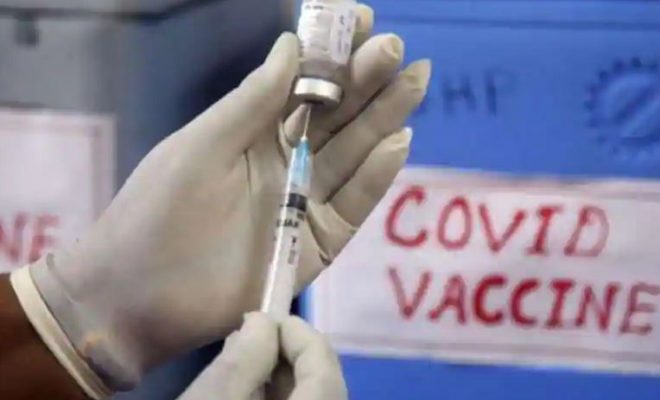60,000 Children Are Poisoned Each Year From This

As physicians become more reliant on prescribing medications to treat illness instead of advocating preventive measures, more of our children are suffering from accidental medication poisonings.
The number of people taking prescription medications has risen to an alarming 60 percent. With this increased exposure comes a rise in the number of accidental medication poisonings in children.
At least 60,000 children are poisoned each year by prescription medications and are treated in emergency rooms.1 Many of these children require in-patient hospitalization for treatment.
The American Association of Poison Control Centers report receiving a phone call about potential accidental poisoning once every 15 seconds, half of which are attributed to medications.2
Although these numbers are high, they don’t tell the whole story. Non-profit organization Safe Kids Worldwide estimates that children get the wrong medication or the wrong dose over 500,000 times each year.3
Illness and disease prevention relies on good nutrition, adequate exercise and smart lifestyle choices, such as lower exposure to environmental toxins, quitting smoking or reducing alcohol consumption. There are specific instances when medications are necessary and lifesaving.
Unfortunately, many times physicians and patients have grown used to taking prescription and over-the-counter medications as a matter of course.
Media advertising often promotes the use of medications as necessary, when in fact there may be alternative approaches that carry less side effects for you and your children.
Symptoms of Accidental Medicine Poisoning
If you suspect your child has taken a prescription or over-the-counter medication, call the American Poison Control Centers at 1-800-222-1222 immediately.
If you are unsure what medication your child may have taken, call 911 or the emergency number in your area for transportation to the nearest medical facility.
Although your child may appear fine in the initial minutes, this can change rapidly. You want to start treatment as soon as possible to reduce the risk of permanent damage or potential death. Unfortunately, symptoms of a medication overdose may not be specific. These symptoms can include:
| Nausea and Vomiting | Diarrhea | Low Blood Pressure |
| Low Heart Rate | Seizure | Agitation |
| Coma | Abdominal Cramp | Sleepiness |
| Loss of Balance | Confusion |
In 2014, 85 percent of the poison exposures, including all substances, reported to the U.S. Poison Control Centers were non-toxic, minimally toxic or had only a minor health effect.4
However, without knowledge of the substance your child ingested or knowledge of the effect it could have, it is essential that you call the Poison Control Centers or your local emergency number.
Why Children Are at Greater Risk
Children under the age of 6 are at greater risk for accidental exposure to medications than older children. Peak accidental poisoning frequency happens between the ages of 1 and 2, while medication poisonings in the teen years are often intentional or the result of an unintended overdose.5
Younger children put everything and anything that reaches their hands into their mouths. It is a way for them to explore their environment.
In an effective and visual display of how medications are similar in appearance to candy, East Tennessee Children’s Hospital in Knoxville, Tennessee bakes a gingerbread house, replacing the candy with medications.
Two cookie houses sit side by side under Plexiglass, one with candy and the other with medication. It’s difficult to tell them apart.6
According to Kate Carr, president and CEO of Safe Kids Worldwide, 95 percent of emergency room visits for accidental medication poisonings are caused by a child ingesting medication when they are unsupervised. Only 5 percent are from dosing errors from caregivers.7
The increased risk to children from prescription medication is a problem experienced in many countries.8 The type of medication involved in accidental poisonings can vary between younger children and teens.
While younger children are more apt to put any type of medication in their mouths, teens will often seek out opioid prescriptions and experience an accidental overdose or poisoning.9
Most Lethal Medications
The frequency of accidental poisonings is only part of the story. While the percentage of poisonings that result in hospitalization or death amount to 15 percent of all poisonings, the actual number of children affected is at least 60,000.
Pain medications are the single most frequent cause of fatalities from accidental medication poisonings in children.
The category of substances with the largest number of deaths across all ages, including intentional use of opioids in teens, are medications containing acetaminophen, sedatives, sleeping medications, stimulants, and cardiovascular drugs.10
More Medicine Purchased Means More Opportunity
According to Safe Kids Worldwide, the number of prescriptions filled and over-the-counter medications sold between today and 1980 have risen by 280 percent and 560 percent respectively.11
In another study published in Pediatrics, researchers found that the increasing number of prescriptions for adults is strongly correlated with the rising number of exposures and poisonings in children to these medications.
In this study, the numbers were particularly high for opioids in children up to 5 years.12 The study also found visits to the emergency room were highest for events related to diabetes and blood pressure medications. The most serious injuries were reported with opioids and blood pressure medications.
Researchers theorize that the rise in the amount of medication prescribed is related to obesity. The increase in medication prescriptions fall more frequently into drugs used to treat cardiac and metabolic syndromes, such as diabetes, heart disease and hypertension, all of which can be obesity-related.13
Researchers have documented a 30 percent increase in emergency room visits between 2001 and 2008 for accidental medication poisonings and a hospitalization increase of 36 percent.14
According to statistics from the U.S. Centers for Disease Control and Prevention (CDC), between 2009 and 2012, 48 percent of people used prescription medication in the past 30 days and 21 percent used more than three prescription medications.15 These numbers continue to rise.
Family Involvement and Prevention
The steps you take with your children are the best way to prevent accidental medication poisonings. According to emergency-room physician Dr. Katy Stordahl at East Tennessee Children’s Hospital, over 40 percent of the accidental ingestion of medications seen in the emergency room originates from grandparents.16
Safe Kids Worldwide recommends several simple steps you can take to prevent accidental poisoning at home, at the babysitters or with other family and friends.17
- All medications and vitamins should be stored out of reach of your child. Remember that children are good climbers, so place a child-proof lock or latch on that cabinet door also.
- All medication in your home should be stored out of reach. This means don’t store medications in your nightstand, purse or end table where little hands are likely to explore and find them.
- Consider all products medications, such as eye drops, diaper rash cream, vitamins and sunscreen.
- Store all medications in bottles with child-resistant caps, but remember that child-resistant does not mean child proof. Many children are able to work those loose, given enough time.
- Remember medications that need to be stored in the refrigerator must also have child-resistant packaging.
- Be alert to medications that friends and family may bring with them in backpacks, purses and bags. Ask them if they have any medications and store all carrying cases up out of your child’s reach.
- Consider homes where your child visits frequently, such as a friend or babysitter. To keep your child safe, ask how they store their medications, where they store them and what they consider medications.
- If your child must get medication from another caregiver other than yourself, communicate very clearly about when the last dose was given, when the next dose is due and how much is in the dose. Write this information down.
- Talk to grandparents and other family and friends about being careful with medications when visiting your home.
- Clean out your medicine cabinet of all expired medications or those you don’t use.
Who Do You Call?
Don’t wait for symptoms to appear. If you think your child could have eaten medication or other poisons in your home take immediate action. If you know what they took, call the American Association of Poison Control Centers at 1-800-222-1222. They can advise you if your child needs immediate medical attention.
If you don’t know what your child may have eaten, call your local emergency number or take your child to the emergency room immediately. Remember to bring with you the names of any medications your child may have taken in the past 24 hours as prescribed by their doctor, any allergies they have, any changes to their health, the names of medications or poisons your child could have reached and tell the physician any symptoms you may have noticed.








